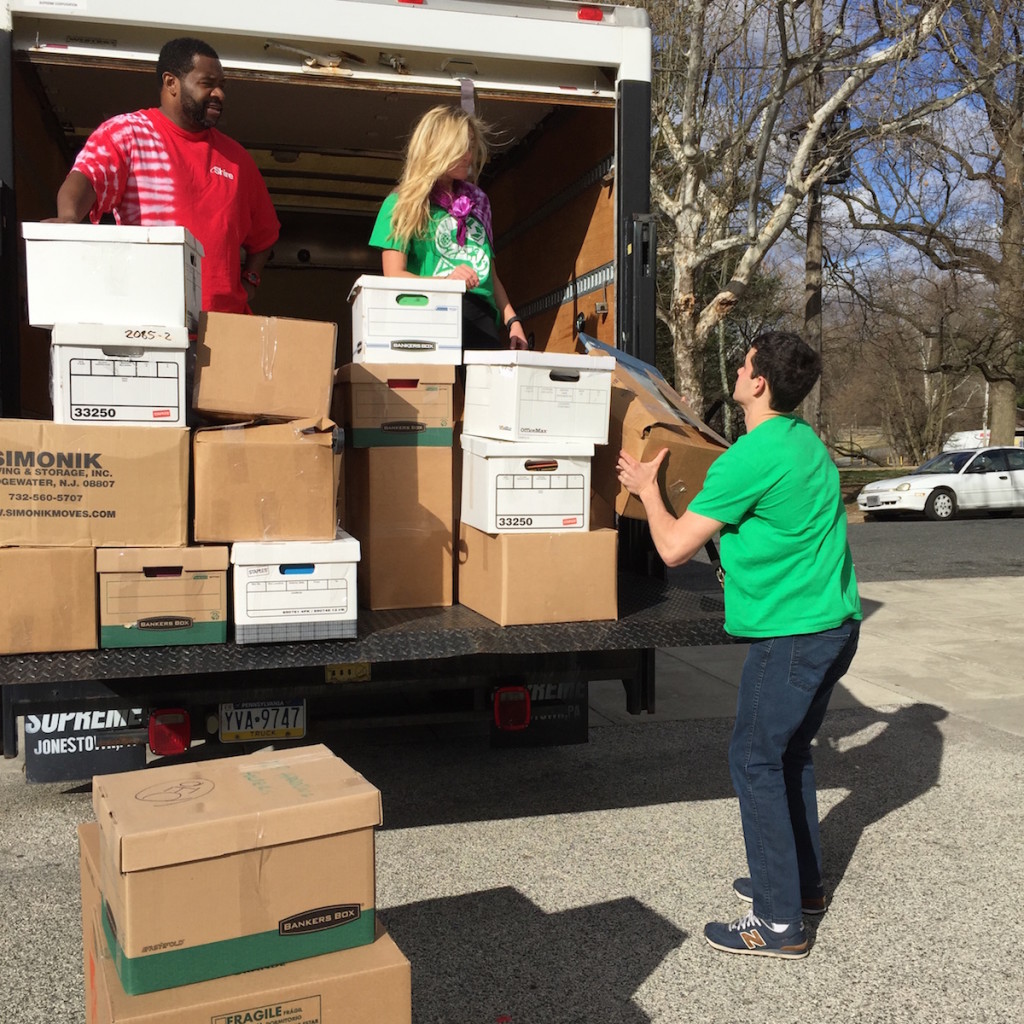Students Helping Students is expanding while shrinking the education gap
 March 21, 2016
Category: Featured, Long, Results
March 21, 2016
Category: Featured, Long, Results
Students Helping Students, the nonprofit that reallocates school supplies from wealthy schools to low-income schools, has big plans to continue its mission of improving educational equity in the U.S.
The organization began informally in 2005 as a disaster relief effort following Hurricane Katrina, according to COO Mike Chawaga. Founder Bill Zandi raised $30,000 and assembled two tractor trailers filled with school supplies to take to the Ninth Ward in New Orleans.
“He thought it was just going to be a community service project,” Chawaga said. But those initial volunteers discovered that the visited schools never consistently had supplies — things like maps, atlases, encyclopedias. Realizing the extent of economic inequality in this country was shocking to them.
“It’s something we thought we’d only see in third world countries,” Chawaga said. “It’s discriminatory based on geographical location.”
They realized that to solve this “crisis,” they “needed to start building a coalition,” he said. In the next five years, the group would donate another $30,000-worth of supplies and other resources to schools in Louisiana, Pennsylvania, North Carolina and Florida. The group incorporated as a 501(c)3 in 2010. They’ve allocated half a million dollars in kind overall, according to Chawaga.
Both Chawaga and Zandi, friends from their time at Great Valley High School, left their full-time jobs eight months ago and committed to SHS as COO and CEO; their shared house at 23rd and Walnut streets doubles as HQ.
“It just started consuming most of our time, and we really couldn’t work any harder” without working on it full-time, Chawaga said. Plus, “it didn’t feel like work to us. We’ll be working from 9 a.m. to 9 p.m. at the house all day. It’s what gets us up in the morning.”
SHS focuses on four program areas:
- SHS High School Clubs — Clubs in affluent schools are partnered with those in low-income schools, and the latter make wish lists for supplies that the former provide.
- School Funding Initiative — This brings the partner clubs together to identify a specific problem at the low-income schools that could be solved with donations, then the students at the affluent schools fundraise. Having a more effective than blindly asking for money, Chawaga said: “People want to know specifically what problem they’re solving.”
- Corporate Distribution Initiative — When a corporation moves offices or is acquired, they often throw out their furniture and supplies, such as whiteboards, Chawaga said. SHS collects them and distributes them to low-income schools. SHS saw its largest single dropoff through this initiative to date last Friday in a delivery to Edward T. Steel School and Overbrook Education Center.
- University Distribution Initiative — Chawaga said SHS is in talks with Drexel and Penn to donate the schools’ used athletic equipment — cleats, helmets — to Philly schools.
There are currently four SHS clubs in Philadelphia and six at suburban high schools near the Main Line, including Chawaga and Zandi’s alma mater.
It’s important to emphasize that all of the suburban high schools are located in wealthy, heavily white school districts, and a few are among the best-ranked in the nation. (Partner school Malvern Preparatory School currently costs $31,200 per year; Episcopal Academy costs $33,100.) Compare this to the School District of Philadelphia, the students of which are overwhelmingly black and economically disadvantaged. There’s extreme discrepancy between those receiving services and those providing it.
Chawaga is aware that there could be criticism of this and said the organization strives to work with the low-income schools to mutually determine what needs can be filled. For instance, Radnor High School students have traveled to G.W. Childs School in Point Breeze to have a brainstorming session with students in that club about how to keep their partnership going — what they can do to help fix a broken system, together. The lines of communication go both ways.
“We have to convey that we’re all on the same team,” Chawaga said.
Projects in New York, D.C. and other cities are in the works, and SHS plans to officially launch SHS chapters elsewhere eventually.
“The network is there, we just have to actually go there,” Chawaga said. “Philly is the prototype.”
SHS is collecting unwanted or gently-used office supplies and furnishings to be redirected to low-income K-12 schools in Philadelphia. If you know a corporation going through a relocation or renovation, or if you have an interest in starting a Students Helping Students High School Club, email mike@emailshs.org or bill@emailshs.org.
Project
Students Helping StudentsTrending News










